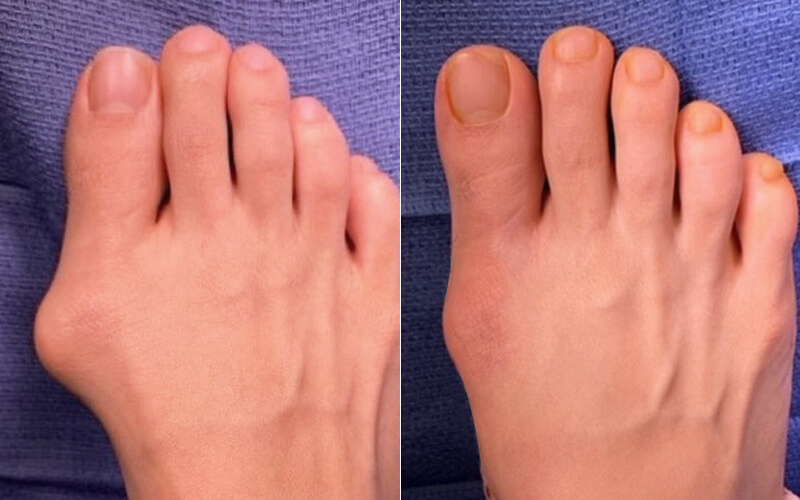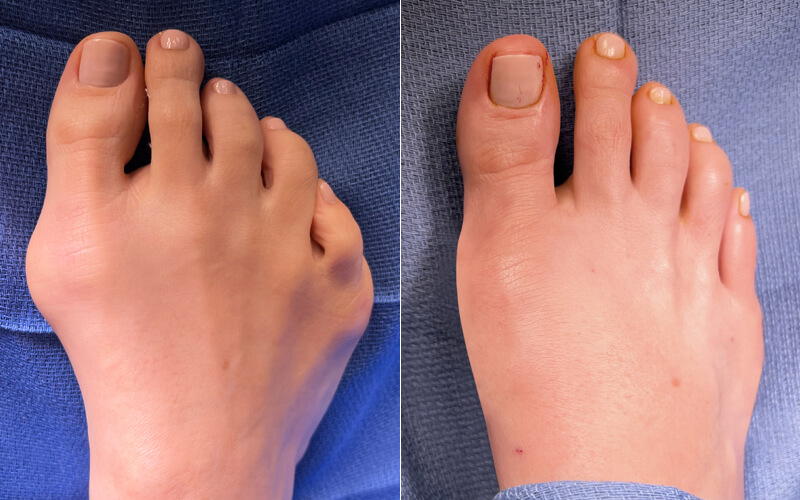Hallux Rigidus Treatment Los Angeles
The big toe is crucial to your ability to walk. When functioning properly, it flexes 50 to 90 degrees during every step, propelling you forward as it does so. If you develop a stiff big toe joint – also known as Hallux Limitus or Hallux Rigidus – it can severely limit your ability to walk, making every step extremely painful. If left untreated, the condition can become progressively worse over time. If you have a stiff big toe joint that is making it difficult to walk, and you live in the Los Angeles area, you should schedule an appointment with Dr. Jamshidinia before your condition degenerates further

Causes of Stiff Big Toe Joint
The exact causes of a stiff big toe joint are not completely understood by medical science. It is thought that a limited range of motion in the joint may be inherited, causing a person to be predisposed to this condition. An acute injury or chronic overuse can also contribute to this condition. Whatever the exact cause, a stiff big toe joint can severely affect the gait, causing a myriad of other problems.
When the big toe is unable to flex properly while walking, additional stress is placed on the rest of the foot to compensate. This can also put extra pressure on the ankles, legs, and lower back. An inefficient walking pattern can lead to increased fatigue and pain in all of these areas. Even though a stiff big toe joint has a limited range of motion, there is still stress placed on it with every step. Over time, this trauma can cause a bone spur to develop. The cartilage protecting the joint will eventually wear away, leading to arthritis in the joint. When this condition goes untreated, the cycle of pain and further stiffening of the joint just continues to get worse.
Treatment Options
Conservative care for big toe joint stiffness may be an option, although it is not always sufficient for alleviating the condition. If conservative care is recommended, a shoe with a stiff sole will usually be used to reduce the amount of movement in the joint. A shoe with a wider toe box and custom orthotics insoles may also be employed to relieve pressure on the big toe. However, these treatments do not treat the underlying causes of big toe joint stiffness, namely a narrowing in the joint itself.
Cortisone injections can be used to reduce the presence of scar tissue and inflammation in the big toe joint. This often leads to temporary relief from the pain. A joint fluid substitute can also be injected into the joint, allowing for better lubrication and movement. This treatment usually requires several injections over the course of many weeks.
Types of Hallux Rigidus Surgeries
In most cases, surgery is required to alleviate the symptoms of big toe joint stiffness. There are four main types of surgery performed to return normal function to the joint. They are:
1. Cheilectomy
This is the most commonly performed surgery to correct big toe joint stiffness. In this procedure, all scar tissue and bone spurs are removed from the joint, allowing for a return to normal motion. The recovery from this procedure is usually quite rapid, with physical therapy usually employed to return the full range of normal motion and prevent future scarring and stiffness. However, this procedure is not useful for people with severe big toe arthritis.
2. Arthrodesis
In some cases, the removal of bone spurs and scar tissue alone is not enough to allow the joint to function properly. In these cases, part of the first metatarsal bone is also cut to make more room for movement in the joint. The healing process is longer for these procedures, as the cut bone needs additional time to heal. Although patients can usually walk soon after surgery, it takes about two months for a full return to normal activity. Sometimes, the first metatarsal is so elevated that it needs to be fused to a bone in the midfoot using pins, screws, or plates. By bringing the first metatarsal down to the ground, this method helps prevent the joint from jamming in the future.
3. Joint Fusion
The most extreme cases often call for fusing of the big toe joint. This immobilizes the joint, but it also alleviates all pain in the area. Recovery usually takes six to eight weeks, during which time a protective boot must be worn. A minimal amount of weight can be put on the foot during this time but, after recovery, a full level of activity can be resumed.
4. Arthroplasty
Also known as joint replacement surgery, this procedure removes part of the joint and replaces it with a titanium prosthetic. This method is particularly helpful for treating older patients. The implant preserves the full range of motion while eliminating the pain.
The proper surgical method for you will depend on the severity of your big toe joint stiffness. Dr. Jamshidinia can recommend the best method for treating your particular condition during a consultation at his Los Angeles office.
Frequently Asked Questions:
The condition is usually marked by pain and a limited range of motion in the big toe joint. If a bone spur develops, there may be pain over the top of the joint as well. If you think you may have this condition, seeing a podiatrist can lead to early Hallux Rigidus treatment before the condition gets worse.
The need for surgery will depend on the severity of your condition, though a stiff big toe joint can rarely be cured using conservative care methods. Dr. Jamshidinia can advise you on all of your treatment options, including surgery.




